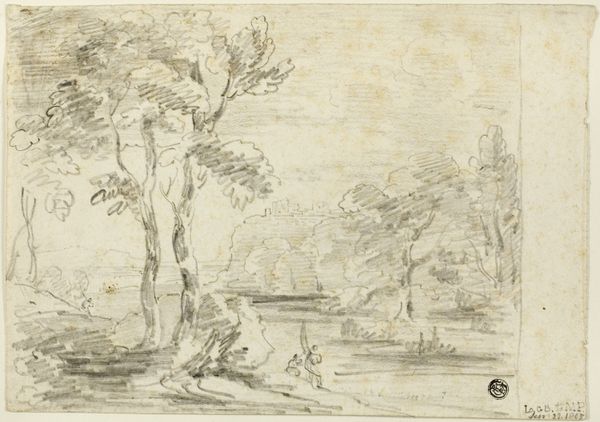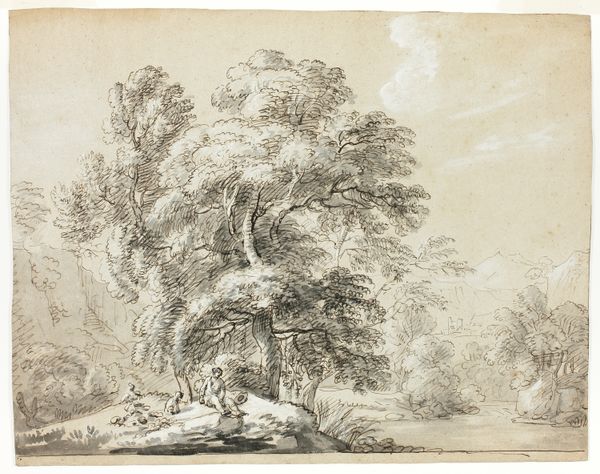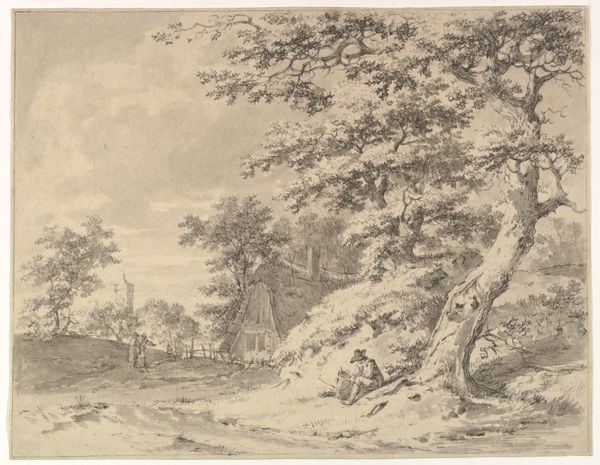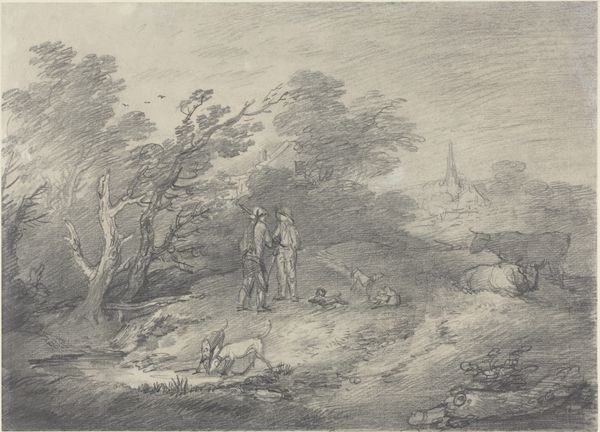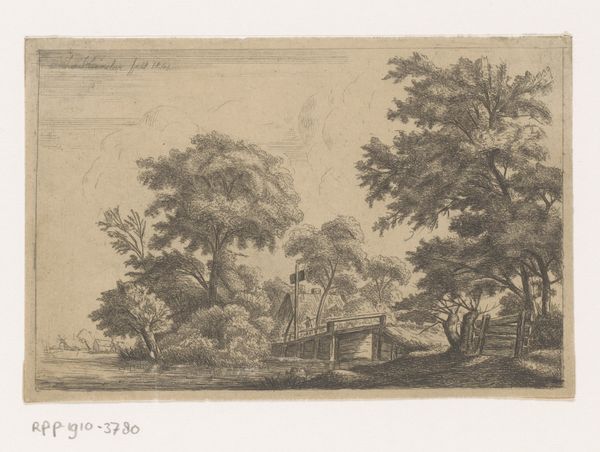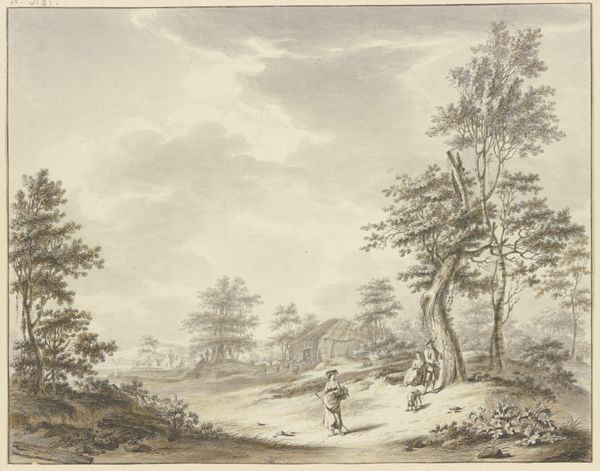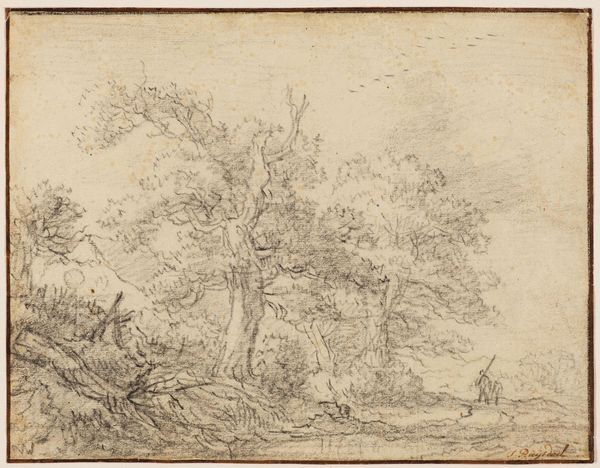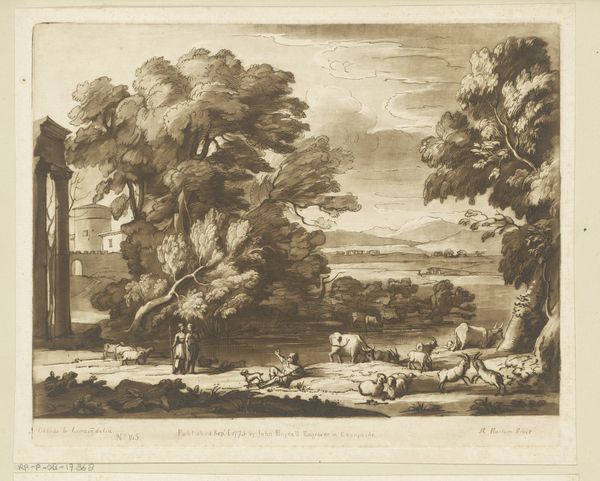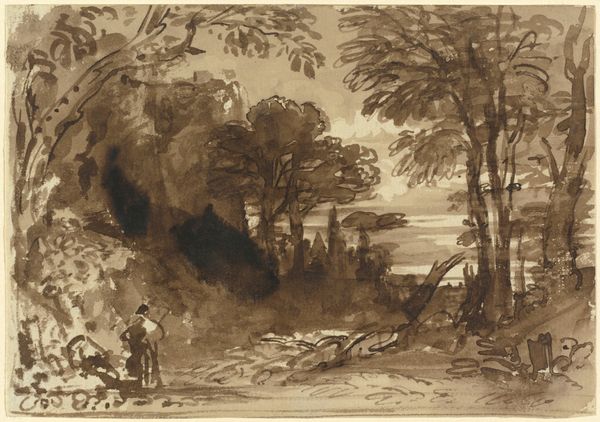
drawing, ink
#
drawing
#
neoclacissism
#
landscape
#
figuration
#
ink
Dimensions: sheet: 20.5 × 29 cm (8 1/16 × 11 7/16 in.)
Copyright: National Gallery of Art: CC0 1.0
Curator: Here we have "Diana and Her Companions in a Landscape," a drawing made with ink during the early 19th century. It is thought to be by Luigi Brenta. Editor: My goodness, it's quite enchanting, isn’t it? Like stepping into a dream where gods and nymphs roam free. The sepia tones give it a timeless, almost mythical quality. Curator: Absolutely. Brenta, working within a Neoclassical framework, shows a figural composition set in a natural world. It raises interesting questions about how landscapes were produced, viewed, and consumed during that period. The material limitations of ink and paper also come into play. Editor: True. Looking closely, you can see how deftly he manipulates the ink washes to create a sense of depth. There’s a little horse off in the distance – oh, my – galloping towards something secret! Curator: Yes, consider the economy of labor invested in a drawing like this. Was this intended as a study for a larger work, or valued as an artwork in its own right? Ink was readily available but mastering it required specific skill and training within workshop environments. Editor: The lightness of it also intrigues me. Look how swiftly the hand moved across the page—creating texture where there’s light, and shadowy intrigue beneath those very expressive trees! I'd wager that a practiced, nimble artist, working efficiently, created this effect. Curator: We can only surmise the artist’s intent! Examining the production means encourages us to challenge art as simply divine inspiration and emphasize the real socio-economic forces that shape art objects. The commerce, labor systems and available materials impacted its execution. Editor: And isn't it marvelous how Brenta manages to give the impression of lush vegetation despite what are quite economical, or "rapid" if you prefer, strokes of ink. In doing so, it evokes a sensation that is so complete! Curator: Agreed! Exploring material culture offers a different yet deeply illuminating way to appreciate works from periods gone by. Editor: Absolutely. It grounds us, reminding us that beauty is inextricably linked to the sweat, skill, and resources that bring it into being. A journey that takes us back to our own mortal beginnings.
Comments
No comments
Be the first to comment and join the conversation on the ultimate creative platform.

